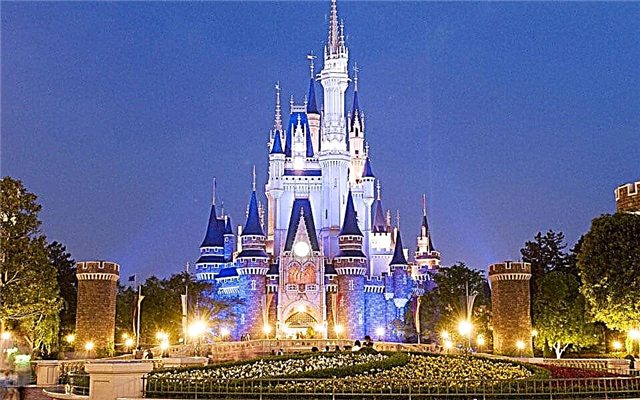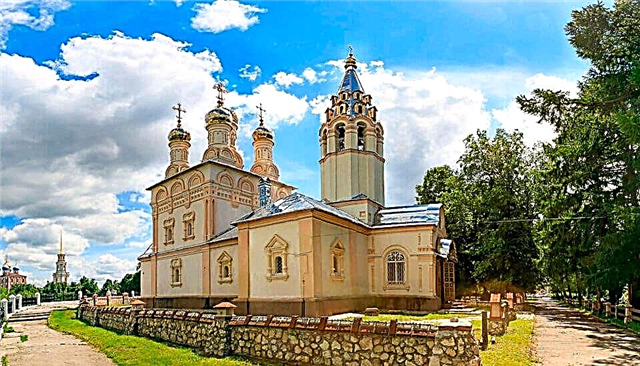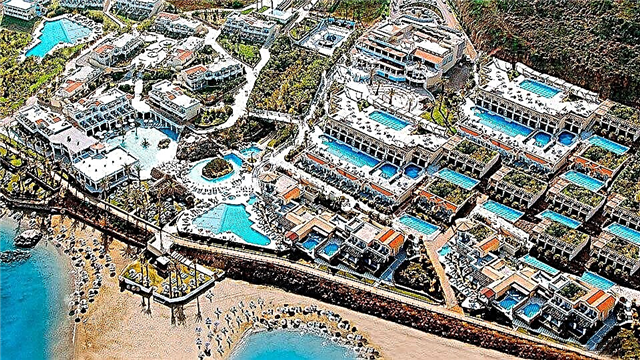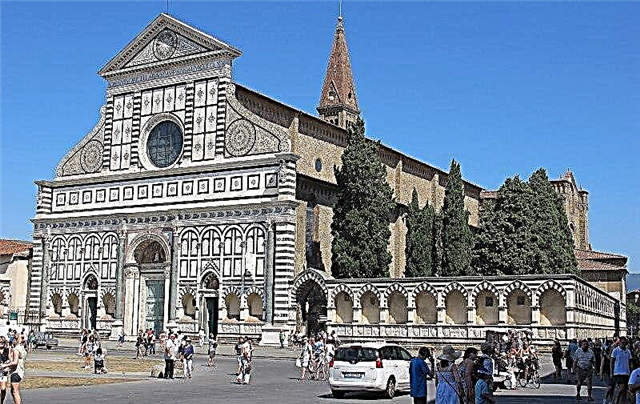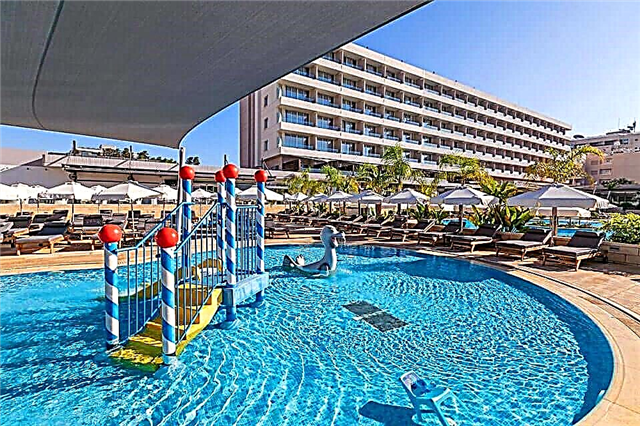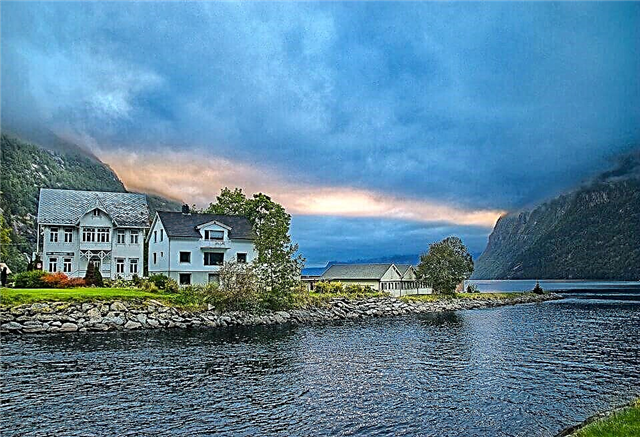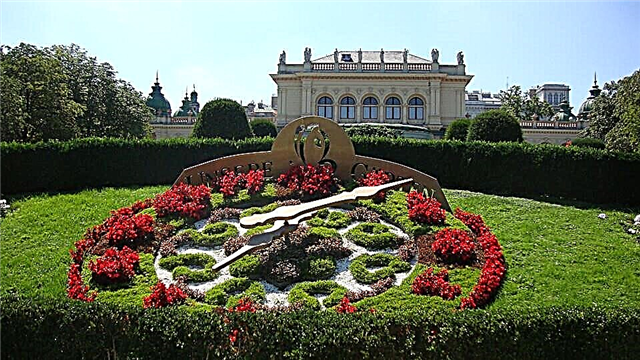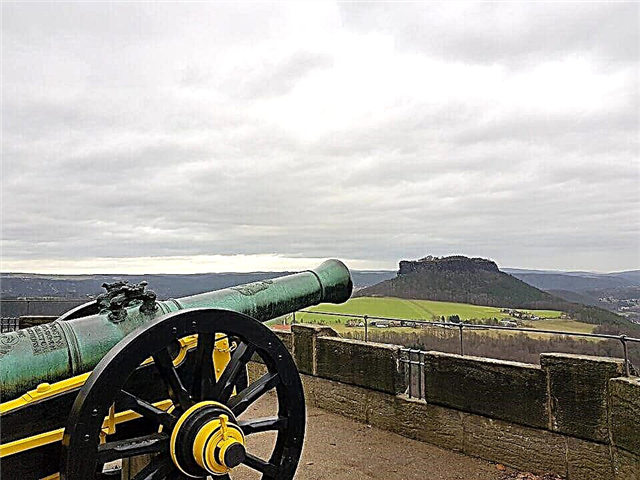The Saxon Switzerland National Park is located near Dresden, practically on the border of the Czech Republic and Germany. The Elbe River flows here. You can come here for different purposes: admire beautiful views, walk along forest roads, take photos. Or visit ancient fortresses, look at their walls, towers, deep wells, visit museums and colorful restaurants. But if you have the time, it is better to combine both options.
History

People have appreciated this wonderful place for a long time. But at the end of the 19th century, he was in real danger. Sand quarries appeared in this area, and railways were being built. The relief could be irreparably disfigured. Fortunately, this did not happen. In 1850, this area became a nature conservation area, in the following decades, actions continued to protect the region. It was forbidden to develop sandstone here, while destroying rocks.
At the beginning of the 20th century, a society was organized to defend Saxon Switzerland. One after another, the local lands began to receive the status of reserves. The national park itself was created in 1956, for 30 years it expanded its borders, and in 1990 it was transferred under the control of the government of the Federal Republic of Germany.
Why Switzerland
Today the park's area reaches 93 km2. These lands can be called some of the most beautiful in Germany. Mountains and rivers, forests and parks, clean air, numerous attractions, both historical and natural, make Saxon Switzerland an attractive destination for tourists from all over the world. Why was the local land given such a name? It was invented by Swiss artists who taught in Dresden at the Academy of Arts. The landscape reminded them of their homeland, which is why they christened it that way. Since then, the area has not been called otherwise.
What to watch
The park is simply huge, so it is better to set aside a few days to get acquainted with all its wonders. Otherwise, you risk missing out on a lot. For example, the "Trail of Artists" stretches for 112 km, and along the way you can see a lot of interesting things, in particular, world-famous historical monuments. Don't forget about comfortable clothes and shoes.
Bastei

As a rule, everyone visits Bastei. This simply cannot be missed. This is a whole mountain range: picturesque cliffs, the height of which reaches almost 200 m. They rise above the Elbe, and an amazingly beautiful view of the national park itself opens from the observation deck. Also called Bastei is a bridge, the length of which is 75 m. It consists of 7 arched spans. Once the bridge was made of wood, now it is made of stone.
Königstein fortress

The fortress is located next to the city of the same name. Here you can see about fifty old buildings, as well as a well, the depth of which is more than 150 m. Admission is free, but there is a museum here, and you can order an excursion that will acquaint you with the history of the fortress. There is also an excellent restaurant here, they sell souvenirs. The history of the fortress is remarkable. It is first mentioned in documents from the 13th century. At one time she played an important military role.
While in it, it was possible to control the banks of the Elbe. Then a monastery was located in the fortress, but it did not exist here for long. In the 18th century, the alchemist Böttger was imprisoned here, who discovered the method of making European porcelain - hence the famous Meissen porcelain. When an uprising took place in Dresden in 1849, the Saxon royal family took refuge in the fortress. Then prisoners were kept here for a long time. And during the Second World War, it was in this fortress that paintings from the world famous Dresden Gallery were hidden.
Lichtenhain waterfall

The waterfall was mentioned in the sources already at the beginning of the 19th century. Now you can see tourists here all the time. Once the waterfall was very small and did not enjoy such popularity. Then it was fenced off with a dam. In the mid-90s of the last century, the dam was repaired, and now the water is lowered to music every half hour. It is worth mentioning that it is from this waterfall that many hiking trails begin. For example, the road to Kushtal, if you move from here, will take you about half an hour.
Kushtal

Translated from German, this word is translated as "cowshed". However, you will not find cows here. In fact, Kushtal is a rocky gate. They are quite narrow, their height exceeds 10 m, and their width is 16 m. They go to the observation deck, from where - from a height of 337 m - you can admire Saxon Switzerland. And here all the same cows? In ancient times, they were hidden behind the gates from the Swedish military. And, of course, there is a restaurant for travelers to sit and eat.
Fortress Stolpen

Already in the 12th century, the first fortifications appeared where important trade routes converged. The fortress acquired its final appearance in the middle of the 15th century. Today it is located in the territory of the national park. Its name comes from a real miracle of nature - giant stone pillars. They are of volcanic origin. In times immemorial, lava solidified, taking on such picturesque forms.
At first, Serbs lived in Stolpen, then, for several centuries, the residence of the bishops was located in the fortress. One of the towers housed a kitchen, and even a hospital, where healed with medicinal herbs. But when the tower was destroyed by fire and the subsequent hurricane, it was no longer rebuilt. The most important was another tower, round in shape - from it the bastions began.
In the 16th century it was bought from the bishops, now it belonged to the Elector of Saxony Augustus. There were at different times: a military garrison, a fire station, a prison. The most interesting thing here is a well cut in basalt, an unusually hard stone. Its depth exceeds 80m, and it was pierced for several years - either by heating the basalt with the help of fires, or by pouring it with water to cool it. The rock cracked at the same time. The cost of such work was very high, so the well cost a fortune.
Rathenskiy rock theater
This is a summer theater in a park near Rathen. Made it at the request of the residents. For a long time, performances based on the works of Karl May, famous for his stories about the Indian Winnetou, enjoyed particular popularity. Now, during the warm season, up to 90 performances can be watched in the theater. Up to 2 thousand viewers can enjoy the action at the same time. In addition to westerns, operas and children's performances are also shown here.
Tours
To see the most interesting places, it is worth ordering one of the organized excursions. For example, “From Prague to Saxon Switzerland. By the path of artists ”. You will visit the Bastei gorge, admire the steep cliffs, walk along the famous stone bridge. You will see sculptures created by nature itself - the wind and precipitation affected the rocks. You will take a trip along the "Trail of Artists". Note that in some places it winds along the edge of the cliff. But the views from here are stunning. No wonder painters and photographers stay here for a long time.
Do you want to unravel the secrets of castles and fortresses? Then this excursion is for you. You will be able to get acquainted in detail with the Königstein fortress, which was once considered impregnable. Hear the story of how Meissen porcelain began to be made, admire the places that were once appreciated by the Russian emperor Peter I. And, approaching the Stolpen fortress, you will get acquainted with the stories of famous state criminals. For example, several bishops were imprisoned here, the favorite of King Augustus the Strong, Countess von Kosel. In the fortress of Neuraten, there was once a refuge for robbers.
Please note that you can go on this excursion if you are in Prague. The program also includes free time so that you can get to know Saxon Switzerland better on your own. Another very interesting excursion is called “The Magic Power of the Elements”. It must be said that in these places nature showed itself to the fullest: in time immemorial water splashed here, which later retreated, exposing sand slabs.
Since then, everything has happened - volcanic eruptions, terrible showers, powerful hurricanes. As a result, the mountains and rocks have acquired an unusual poetic appearance - many of them resemble real sculptures. The local nature inspired the composer Richard Wagner and the great storyteller Hans Christian Andersen to create new works. And, of course, as part of this excursion, you will visit the Stolpen fortress and take wonderful photos on the Bastei bridge.
Residence Bologna
Prague
Located just 6 minutes walk from Charles Bridge

Atlantic Hotel
Prague
10 minutes walk from Old Town Square

Hotel Harmony
Prague
Located within walking distance from Wenceslas Square

Opening hours and ticket prices
Arriving in order to walk freely in Saxon Switzerland, you need to be prepared for the fact that you will have to pay for visiting certain objects. To see the rocky castle of Neuraten, from which now, however, only the foundation remains, an adult needs to pay 2 euros, and a child 1. If you come here when the ticket office is no longer working, you can put your money in a special box. For visiting Königstein you need to pay: 10 euros in summer, and 8 euros in winter. If you are a schoolboy, student or pensioner, you will need to pay less: 7 euros in summer and 6 in winter. Additionally, you can purchase a service such as an audio guide - 3 euros.
From April to October the fortress is open from 9 am to 6 pm, from November to March: from 9 am to 5 pm. The Stolpen examination fee is 6 euros, for beneficiaries - 3 euros. Children under 5 years old are admitted free. During the warm season, from April to October, Stolpen is open from 10 am to 6 pm, during the rest of the year: from 10 am to 4 pm.
Best time to travel
It is best to come to Saxon Switzerland, according to experienced tourists - in summer or autumn. Winter can be a pleasant time to travel, but there are no guarantees - it is possible that the weather will let you down. And, for example, because of the heavy snowfall, it will not be possible to inspect everything conceived. And the daylight hours are short. Most people come in the spring. And this means queues at museums, crowding at observation decks, and there may be no empty seats in restaurants. Needless to say, nature is good in spring, everything blooms, but if you want to fully enjoy this wonderful land, come better in August or September.
Where is it located and how to get there
The most convenient way to travel to Saxon Switzerland is from Prague or Dresden. The closest national park is located precisely to these two cities. If you are coming from Prague, take the Ec train at the city's main train station. He goes to these parts 3 times a day. The road to Bad Schandau station will take a little less than 2 hours. Then you have to change to a taxi to get directly to the park itself. From Dresden to the same Bad Schandau station can also be reached by train. And then take a taxi. The most convenient route is to go by your own car, from Prague, along the E55 highway. Two hours - and you are there.
Believe me, Saxon Switzerland will enchant you.

